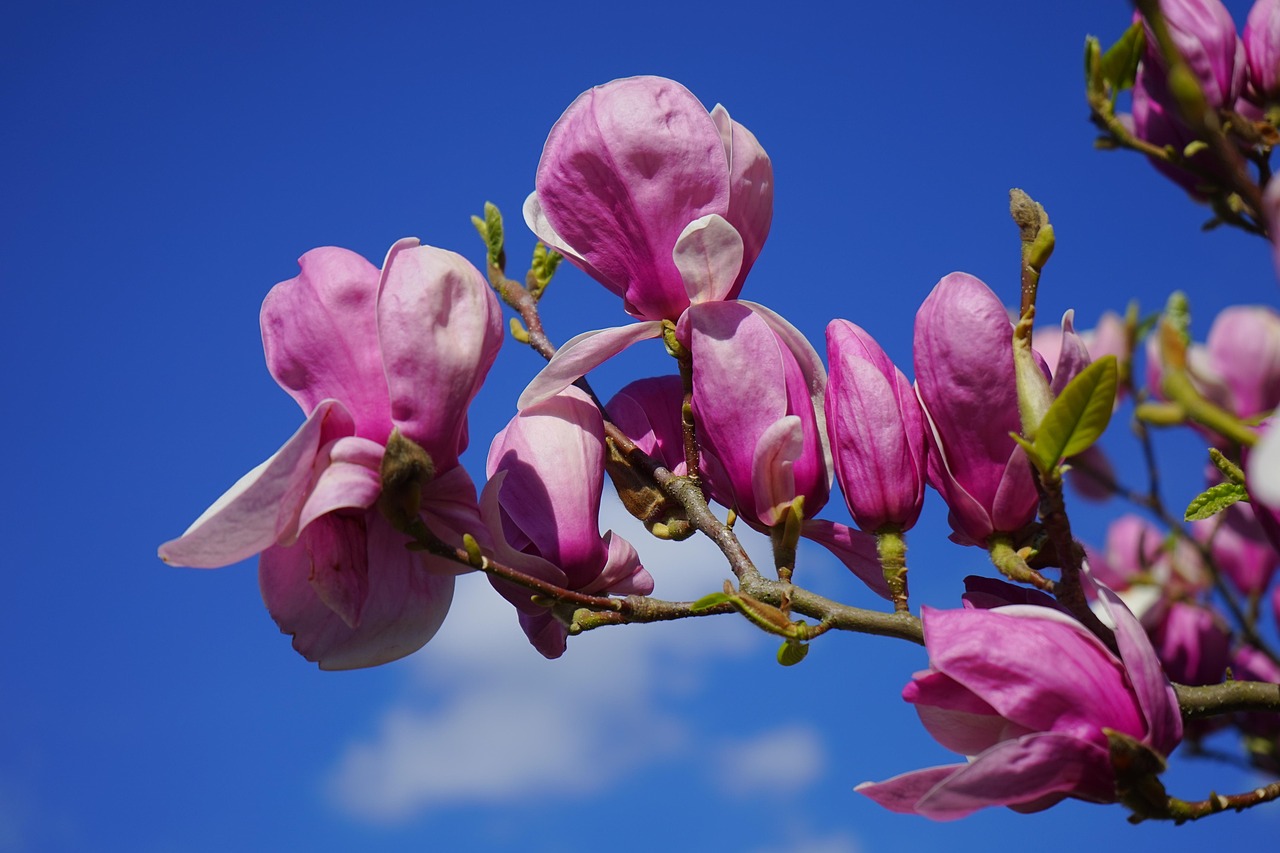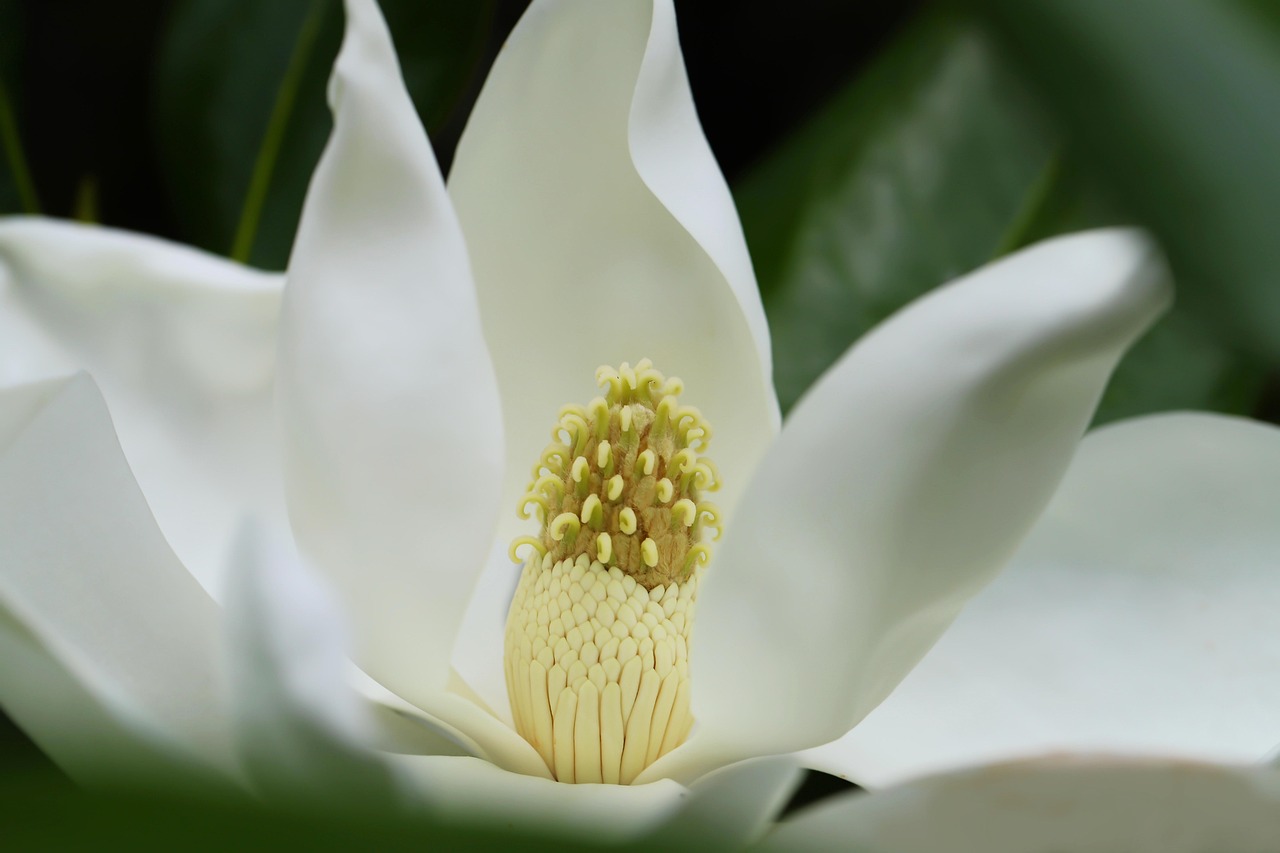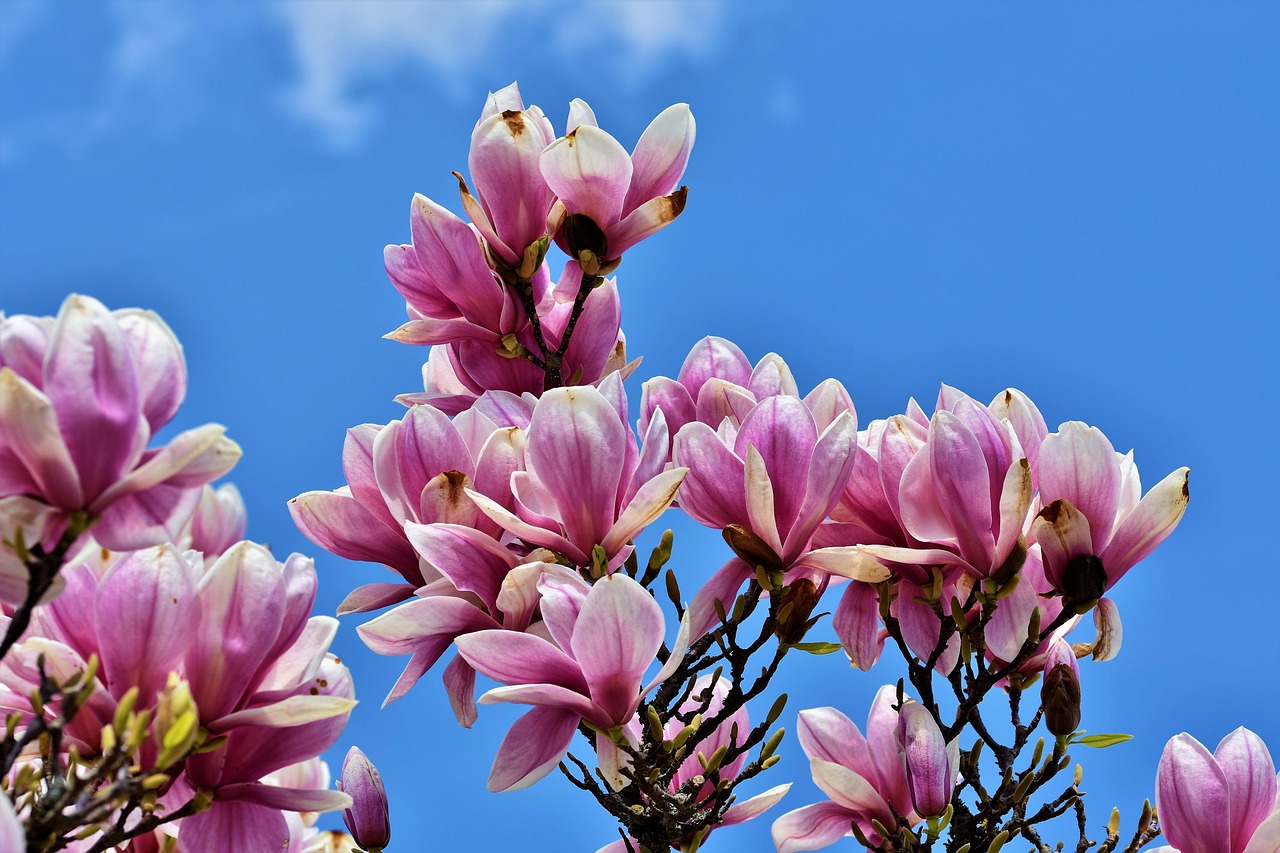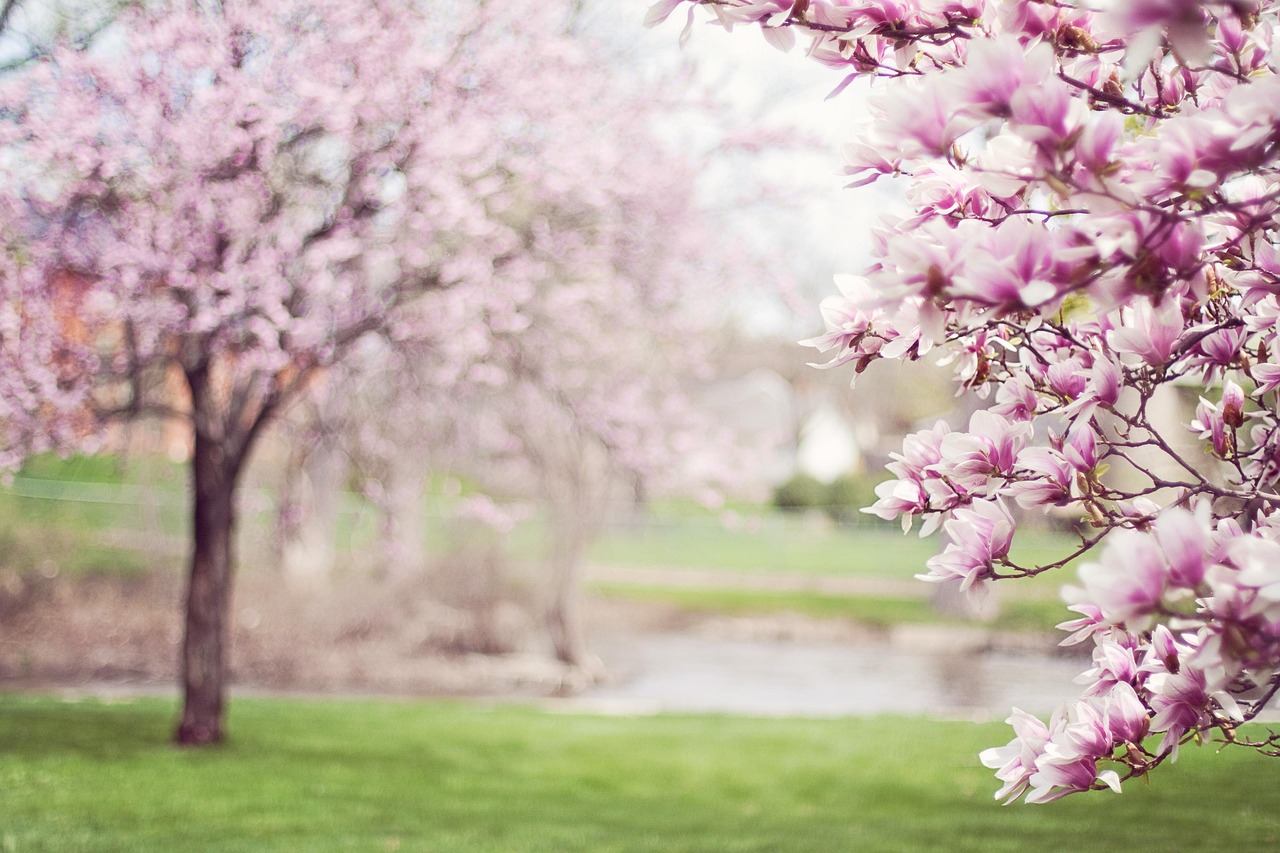Yes, parts of the magnolia tree are edible. The flowers, buds, and bark have culinary uses. However, it is essential to identify the specific species and prepare them correctly to ensure safety and palatability.
Understanding the Magnolia Tree

The magnolia tree belongs to the family Magnoliaceae and includes a variety of species. These trees are known for their striking blossoms and aromatic leaves. Native to Asia and the Americas, magnolias have been cherished for their beauty in gardens and landscapes. However, many might be surprised to learn that certain parts of this tree can be consumed.
Magnolia flowers are often large and fragrant, blooming in shades of white, pink, purple, or yellow. These blossoms typically appear in early spring before the leaves emerge. The tree itself can grow quite tall, reaching heights of up to 80 feet or more, depending on the species. Some common types include the Southern magnolia (Magnolia grandiflora) and the Saucer magnolia (Magnolia × soulangeana).
Culinary Uses of Magnolia
While not commonly found in mainstream cuisine, magnolia has been used in various traditional dishes across cultures. Here are some ways different parts of the magnolia tree are utilized:
Edible Parts of Magnolia
- Flowers: Magnolia flowers can be used in salads or as a garnish. They have a mild flavor and can add a unique touch to dishes.
- Flower Buds: The unopened buds can be pickled and used in condiments or as a flavoring agent in various recipes.
- Bark: Magnolia bark is sometimes used in traditional medicine. It can also be used to flavor beverages like teas.
Nutritional Benefits
Magnolia flowers and buds contain several beneficial compounds. They are rich in antioxidants and may possess anti-inflammatory properties. While research is still ongoing, some studies suggest that certain components found in magnolia may contribute positively to health.
Preparation Methods
Proper preparation is essential when using magnolia in cooking. Here are some suggestions:
- Harvesting: Only pick flowers and buds from healthy trees. Ensure they are free from pesticides and pollutants.
- Cleaning: Rinse the parts thoroughly to remove any dirt or insects.
- Culinary Uses: Use fresh flowers in salads or make a floral-infused oil. Pickled buds can enhance various dishes.
Safety Considerations
While magnolia parts are generally safe to eat, there are a few safety considerations to keep in mind:
- Ensure correct identification of the magnolia species.
- Avoid consuming large quantities at once, especially if trying for the first time.
- Consult a healthcare provider if you have allergies or specific health conditions before trying magnolia.
Magnolia in Different Cultures
Magnolia has found its place in various cuisines around the world. In some Asian cultures, particularly within traditional Chinese medicine, magnolia bark has been used for centuries to aid digestion and promote relaxation. The flowers are often featured in Asian culinary dishes, adding both aesthetic value and subtle flavor.
In North America, while not as widely used, there is a growing interest in local foraging. Culinary enthusiasts are beginning to explore the possibilities of incorporating magnolia into modern dishes. This trend highlights a broader movement towards using native plants in cooking.
Popular Recipes Using Magnolia
Here are a few ideas for recipes that include magnolia:
- Magnolia Flower Salad: Toss fresh magnolia petals with mixed greens, nuts, and a light vinaigrette.
- Pickled Magnolia Buds: Prepare a simple pickling brine and soak the buds for a tangy condiment.
- Magnolia Tea: Brew dried magnolia bark with hot water for a calming herbal tea.
Exploring Magnolia’s Flavor Profile
The flavor of magnolia can be described as subtle and floral. While it might not overpower other ingredients, it can enhance dishes with its unique aroma. When using magnolia in cooking, consider balancing its flavor with other complementary ingredients.
This versatility makes magnolia an interesting addition to both sweet and savory dishes. As people continue to explore local ingredients, it is likely that magnolia will gain more recognition in culinary circles.
The fascination with edible plants is growing. More chefs and home cooks are seeking out unique flavors from nature. Magnolia serves as a beautiful example of how we can incorporate these elements into our diets creatively.
Magnolia Species and Their Culinary Uses
Different species of magnolia offer various flavors and culinary possibilities. Understanding these distinctions can help you choose the right kind for your culinary adventures. Here are some notable species and their uses:
Southern Magnolia (Magnolia grandiflora)
The Southern magnolia is perhaps the most well-known species, particularly in the southern United States. Its large, white flowers are not only beautiful but also edible. The petals have a mild flavor and can be used fresh in salads or as an interesting garnish.
Saucer Magnolia (Magnolia × soulangeana)
This hybrid species produces stunning pink and white flowers. The petals of the Saucer magnolia are slightly thicker than those of the Southern magnolia, making them suitable for infusing in oils or syrups. They can also be used to create visually appealing dishes due to their vibrant color.
Star Magnolia (Magnolia stellata)
Star magnolia flowers are smaller and have a star-like appearance. Their petals are delicate and flavorful, making them excellent for salads or desserts. The unique shape adds an artistic flair to any dish.
Harvesting and Storing Magnolia
Harvesting magnolia flowers and buds requires some knowledge and care. Proper techniques ensure that you collect the best parts while preserving the health of the tree.
Best Practices for Harvesting
- Timing: The best time to harvest magnolia flowers is when they are fully open but not wilting. For buds, pick them just before they open.
- Location: Choose healthy trees away from pollutants and chemicals. Avoid picking from trees in urban areas where exposure to pesticides may occur.
- Tools: Use clean scissors or pruning shears to make a clean cut, minimizing damage to the tree.
Storing Magnolias
Once harvested, it’s essential to store magnolia parts correctly to maintain their freshness:
- Flowers: Wrap the flowers gently in a damp paper towel and place them in a plastic bag in the refrigerator. They can last up to a week.
- Buds: For freshly picked buds, store them similarly in a cool place. If pickled, store them in a sealed jar in the refrigerator.
- Bark: Dried magnolia bark should be kept in an airtight container away from light and moisture to preserve its flavor.
Cooking with Magnolia: Tips and Techniques
Culinary experimentation with magnolia can yield delightful results. Here are some useful tips for incorporating this unique ingredient into your cooking:
Infusions
Magnolia flowers and bark can be used to create infusions that enhance the flavor of various dishes:
- Floral Oils: Infuse olive oil or other oils with magnolia petals to create a fragrant cooking oil.
- Syrups: Make a simple syrup by simmering sugar, water, and magnolia petals for a floral sweetness suitable for cocktails or desserts.
- Teas: Brew dried magnolia bark or flowers with hot water to create a soothing tea with floral notes.
Baking with Magnolia
The delicate flavor of magnolia can enhance baked goods. Here are some ways to use it:
- Cakes: Add finely chopped magnolia petals to cake batter for a subtle floral flavor and beautiful presentation.
- Scones: Incorporate dried magnolia buds into scone recipes for an aromatic twist.
- Muffins: Use magnolia-infused oil in muffin recipes to infuse a hint of floral aroma.
Cultural Significance of Magnolia
Beyond its culinary uses, magnolia holds cultural significance in various societies. Its beauty has made it a symbol of purity and dignity.
Symbolism and Folklore
In many cultures, magnolias are associated with nobility and perseverance. In Chinese culture, magnolias symbolize beauty and purity, often featured in art and poetry. They are celebrated during festivals and special occasions for their stunning blooms.
Medicinal Uses
Traditionally, magnolia bark has been used in herbal medicine. Some benefits associated with it include:
- Aiding Digestion: Magnolol, a compound found in magnolia bark, may help improve digestion.
- Anxiety Relief: Magnolia bark is sometimes used to promote relaxation and reduce anxiety levels.
- Anti-Inflammatory Properties: The compounds in magnolia may also help reduce inflammation in the body.
This dual role as both an edible plant and a medicinal herb highlights the versatility of magnolia in various aspects of life.
The Future of Magnolia in Culinary Arts

>As more people become interested in foraging and using local ingredients, magnolia may become more prominent in contemporary cooking. Chefs are increasingly looking for unique flavors that tell a story and connect diners to nature.
The rising trend of sustainable cooking practices aligns well with the use of native plants like magnolia. By incorporating these ingredients into menus, chefs can encourage diners to appreciate local flora while enjoying delicious meals.
As interest grows, it’s likely that more recipes, resources, and culinary techniques involving magnolia will emerge, inspiring future generations to explore this beautiful tree’s potential further.
2>Harvesting Magnolia: Timing and Techniques Understanding the right timing and techniques for harvesting magnolia is crucial for both quality and sustainability. Proper harvesting practices can ensure that you enjoy the best flavors while respecting the tree’s health. The best time to harvest magnolia flowers and buds varies slightly depending on the species: When harvesting, it’s essential to follow certain techniques to prevent damage to the tree: Culinary creativity is key in utilizing magnolia. As chefs experiment with flavors, unique dishes featuring magnolia are emerging on menus worldwide. Magnolia petals can serve as elegant garnishes, enhancing both flavor and visual appeal: Beyond garnishing, magnolia can be incorporated into savory dishes: If you want to enjoy magnolia’s unique flavors beyond its blooming season, consider preservation methods. This allows you to incorporate magnolia into dishes throughout the year. Dried magnolia can maintain its flavor and aroma for months. Here’s how to dry them effectively: Create extracts that can be used in various recipes: The increasing interest in foraging has highlighted the value of magnolia as an edible plant. Many foraging communities are embracing this trend, sharing knowledge and recipes that incorporate local flora. Foraging workshops often include sessions on identifying and using edible plants like magnolia. These educational opportunities help people learn about: Foraging often fosters a sense of community. People come together to explore local parks and forests, sharing their findings and culinary experiences. Magnolias become a topic of conversation as they share recipes, tips, and their love for nature. This camaraderie not only enriches individual experiences but also promotes a deeper appreciation for local ecosystems and sustainable food practices. As more individuals engage with their environment through foraging, the culinary potential of plants like magnolia continues to expand. T he movement towards incorporating local ingredients such as magnolia is also beneficial for the environment. It encourages sustainable practices that help reduce carbon footprints associated with food transportation. Here are some environmental benefits: The culinary exploration of magnolia not only enriches our diets but also aligns with broader environmental goals, creating a positive impact on both our plates and our planet. Magnolia’s unique flavor and versatility make it a fascinating ingredient in various culinary applications. As chefs and home cooks alike discover how to utilize this beautiful tree, they open up new avenues for creativity in the kitchen. To fully appreciate magnolia’s delicate flavor, it is essential to pair it thoughtfully with other ingredients. Here are some suggestions for complementary flavors: As more chefs experiment with magnolia, innovative dishes are emerging. Here are a few examples: The possibilities for incorporating magnolia into dishes are virtually endless. As culinary exploration continues, more recipes and techniques will likely emerge, showcasing this versatile ingredient’s potential. While the culinary uses of magnolia are exciting, there are challenges and considerations to keep in mind. Awareness of these factors can ensure a safe and enjoyable experience when using this plant. One of the primary challenges is accurately identifying edible species of magnolia. Not all magnolia trees produce edible parts, so knowledge is crucial: Another consideration is ensuring that the magnolia you harvest has not been treated with harmful chemicals. Here are some tips to avoid this issue: The growing interest in sustainable and local ingredients suggests a bright future for magnolia in culinary arts. As chefs and home cooks continue to innovate, we may see an increase in dishes featuring this unique plant. The integration of magnolia into contemporary cuisine reflects broader trends towards embracing natural flavors and seasonal ingredients. As awareness spreads, more people may be encouraged to explore foraging and cooking with native plants. Magnolia trees offer more than just beautiful blooms; they provide an array of culinary possibilities that enrich our diets and connect us to nature. With their edible flowers, buds, and bark, magnolias invite us to explore new flavors while promoting sustainable practices and environmental awareness. The journey into the culinary world of magnolia highlights the importance of understanding local flora and their potential uses. As we continue to learn about these unique ingredients, we can create dishes that celebrate their beauty and flavor while fostering a deeper appreciation for our natural environment. In conclusion, whether you are a gourmet chef or a home cook, consider adding magnolia to your culinary repertoire. By doing so, you will not only discover new flavors but also contribute to a growing movement that values sustainability and local ingredients. Embrace the beauty and versatility of magnolia, and you may find it becomes a cherished part of your cooking adventures for years to come.
Optimal Harvesting Times
Harvesting Techniques
Innovative Uses of Magnolia in Modern Cuisine
Floral Garnishes and Presentations
Savory Dishes Featuring Magnolia
Preserving Magnolia for Year-Round Use
Dried Magnolia Flowers and Buds
Making Magnolia Extracts
The Role of Magnolia in Foraging Communities
Foraging Education
The Community Aspect of Foraging
The Environmental Impact of Using Local Ingredients

Exploring Magnolia’s Versatility in Culinary Arts
Pairing Magnolia with Other Ingredients
Innovative Dishes Featuring Magnolia
Challenges and Considerations in Using Magnolia
Identifying Edible Species
Pesticide and Chemical Exposure
The Future of Magnolia in Cuisine
Final Thoughts
